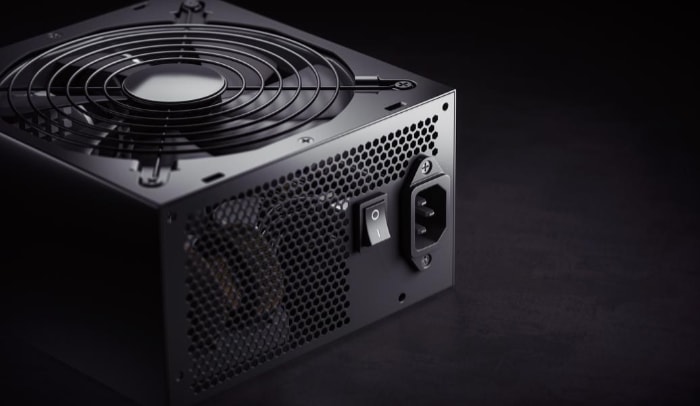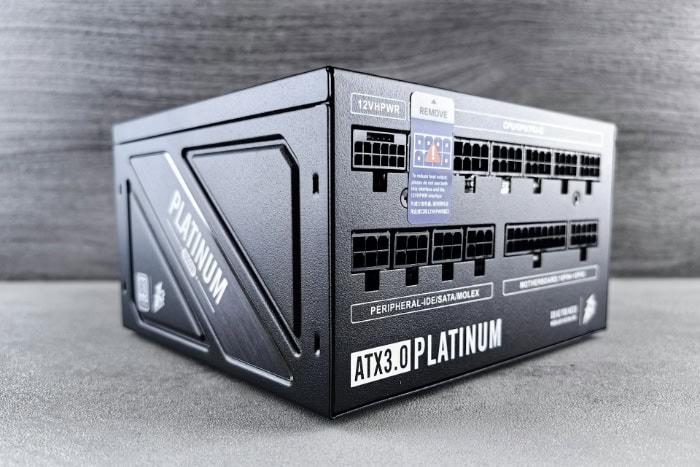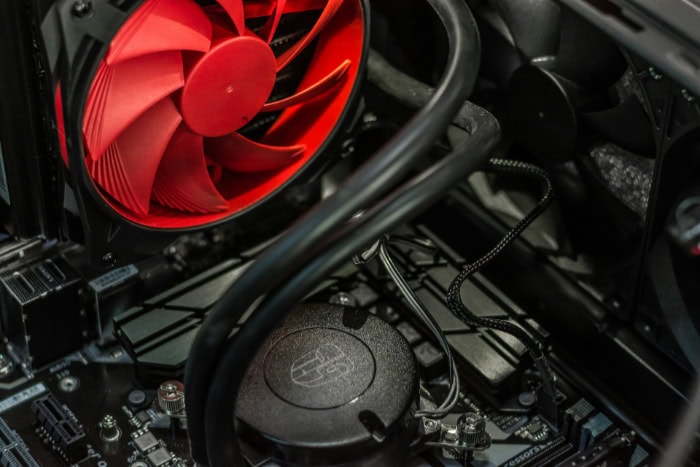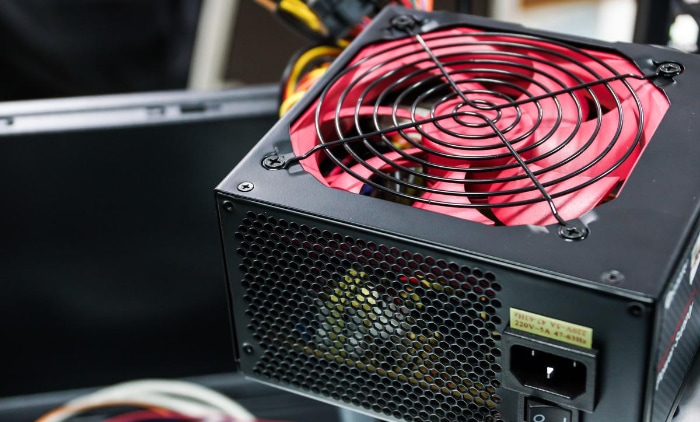How to Choose a PC Power Supply: Avoid Costly Mistakes

A reliable power supply unit (PSU) is the backbone of any PC, ensuring your components receive stable and efficient power. Skimping on or misjudging this critical component can lead to system instability, unexpected shutdowns, or even permanent hardware damage.
Unfortunately, many overlook the PSU, focusing instead on flashy components like GPUs and CPUs, only to face costly issues later. Choosing the right PSU isn’t just about wattage; efficiency ratings, build compatibility, and long-term reliability all play a role in getting it right.
Determine Your Power Requirements
Choosing the right power supply starts with identifying how much power your system actually needs. Every component in your PC, from the CPU to the GPU and even additional storage drives, demands a specific amount of power to operate.
Adding up these demands ensures your PSU can handle the load without straining or shutting down unexpectedly. However, power requirements can fluctuate during high-performance tasks, so it’s a good idea to leave some breathing room in your calculations for both efficiency and future upgrades.
Calculate Total System Wattage
The first step in determining your power requirements is to calculate the wattage your system will draw under typical and maximum load. Online power supply calculators are a practical tool here, they allow you to input your specific components and provide a wattage recommendation.
Alternatively, you can manually sum up the thermal design power (TDP) of your major components, such as the CPU, GPU, RAM, and storage devices. Don’t forget to factor in smaller components like fans and RGB lighting, as they also draw power.
Once you have a total, it’s wise to add a 20 to 30 percent buffer to account for power spikes and to provide flexibility for possible future upgrades.
Account for Future Upgrades
When planning for your power needs, think about the road ahead. Hardware evolves quickly, especially graphics cards and processors, which often demand more power with each new generation.
If you intend to upgrade to a more powerful GPU or add additional storage or peripherals, your PSU should be capable of accommodating those changes. A little foresight here saves you from having to replace your PSU down the line, which can be a hassle and an unnecessary expense.
Risks of Underpowered or Overpowered PSUs
Selecting a PSU with insufficient wattage puts your system at serious risk. A PSU that can’t supply enough power will lead to instability, causing crashes, slower performance, or even complete shutdowns during demanding workloads.
On the other hand, going for a PSU that’s far more powerful than your system needs can also present issues. While it won’t harm your components, it can result in lower efficiency and wasted electricity, especially if the PSU operates far below its optimal load range.
Striking a balance between performance, headroom, and efficiency is essential for both stability and cost-effectiveness.
Understand Efficiency Ratings and Certifications

A power supply’s efficiency not only impacts your system’s energy consumption but also determines how much heat and noise it generates under load. Efficiency is a measure of how well the PSU converts electricity from your wall socket into usable power for your components.
The less efficient the unit, the more energy is wasted as heat, requiring extra cooling and potentially increasing power bills.
80 Plus Certification Tiers Explained
The 80 Plus certification is essentially the standard for PSU efficiency, with different tiers grading a power supply’s performance. At the most basic level, an 80 Plus certified PSU guarantees at least 80% efficiency at 20%, 50%, and 100% loads.
From there, higher tiers such as Bronze, Silver, Gold, Platinum, and Titanium offer increasingly efficient options. For example, Bronze provides around 82–85% efficiency, while Titanium delivers an impressive 94–96%.
The higher the certification, the less power is wasted, reducing heat output and lowering electricity costs. While the differences might seem small, they become significant for high-wattage systems or PCs that are used for extended periods.
Energy Savings vs. Upfront Cost
Higher efficiency PSUs often come with a higher price tag, but their long-term value becomes evident when you consider energy savings and reduced wear on your system. A Titanium-certified unit will cost more upfront compared to a Bronze model, but the energy savings can add up, especially for power-hungry machines like gaming rigs or professional workstations.
Additionally, efficient PSUs generate less heat, reducing the workload on your cooling system and prolonging component lifespan. While efficiency might not always seem like a top priority, it can make a noticeable difference in the long run, particularly for systems that consume significant power.
When to Prioritize Efficiency
Not all builds require high-efficiency PSUs, but there are scenarios where it’s worth prioritizing. Gaming PCs that push hardware to the limit, workstations that handle intense computational loads, and always-on systems like home servers benefit greatly from efficient power delivery.
These setups not only consume more energy but also generate more heat, making a higher-tier PSU a sound investment. Even if your system doesn’t fall under these categories, choosing a PSU with a Gold certification or higher can still provide a good balance of performance and reliability without breaking the bank.
Ensure Compatibility with Your Build

Selecting the right power supply goes beyond power and efficiency, it must also physically and functionally fit your system. A PSU that doesn’t match your case size or lacks the necessary connectors can halt your build before it even starts.
Ensuring compatibility involves evaluating the PSU’s form factor, the type and number of connectors it offers, and its cable management design.
Form Factors (ATX, SFX, etc.)
PSUs come in different sizes, or form factors, designed to fit specific case configurations. The most common is the ATX standard, which works well with standard mid-tower and full-tower cases.
For smaller cases, SFX PSUs are compact alternatives that deliver the same functionality in a smaller package. It’s important to verify that your case can accommodate the PSU form factor you’re considering.
Cases usually outline their PSU form factor compatibility in product specifications, so double-checking this detail can save you the frustration of trying to fit a PSU that’s too large or unsuitable for your build.
Connector Types and Quantity
Another critical factor to examine is the type and number of connectors the PSU provides. A high-performance modern GPU, for example, may require a 12VHPWR connector, which has become standard for newer graphics cards.
Additionally, PCIe cables are essential for powering GPUs, while SATA and Molex connectors are needed for storage drives, fans, and peripherals. Always account for the exact number of connectors required by your build to avoid running into shortages, and consider leaving some extras for potential upgrades.
A PSU that doesn’t support your GPU or limit your peripheral connections can create significant limitations.
Cable Management Options
Cable management plays a huge role in keeping your build clean and organized, especially in cases with limited space. PSUs generally fall into three categories: modular, semi-modular, and non-modular.
Modular PSUs allow you to connect only the cables you need, keeping unnecessary wires out of your case. Semi-modular units offer a mix of pre-attached essential cables and removable ones, striking a good balance between convenience and cost.
Non-modular PSUs come with all cables permanently attached, which can lead to extra clutter, though they tend to be the most affordable. Modular options are particularly useful for smaller builds or for those who value neat and efficient cable layouts.
Evaluate Reliability and Safety Features

The reliability of your power supply is critical for preserving the stability and longevity of your PC. A PSU that fails to deliver consistent and safe power can harm your components, lead to unexpected crashes, or even cause permanent damage.
To ensure your system remains protected under all conditions, modern PSUs come equipped with various safety measures and protections. Alongside these features, considering the manufacturer’s reputation and warranty can provide added peace of mind.
Skipping these steps and opting for lower-quality units may save money upfront, but the risks often outweigh any minor savings.
Key Protections to Look For
A good PSU includes built-in safety mechanisms that shield your system from electrical faults. Over-Voltage Protection (OVP) prevents voltages from exceeding safe limits, protecting sensitive components like your CPU and GPU.
Over-Current Protection (OCP) ensures individual rails, such as the 12V rail, don’t deliver more current than designed, preventing overheating or short circuits. Over-Temperature Protection (OTP) is another critical safeguard, automatically shutting down the PSU if it overheats, preventing further damage to itself and connected components.
These protections are often listed in the product specifications and are essential for any reliable PSU.
Importance of Brand Reputation and Warranties
Trusted PSU brands have earned their reputations by consistently producing reliable, high-performance units. Manufacturers like Corsair, Seasonic, EVGA, and others have established themselves as go-to options for their rigorous quality control and robust designs.
A good warranty is another indicator of reliability, with premium PSUs often coming with coverage lasting 5 to 10 years. A solid warranty demonstrates the manufacturer’s confidence in the product and provides you with support for issues that may arise long after purchase.
Investing in a PSU from a reputable brand ensures that you are less likely to encounter voltage regulation problems or early failures.
Avoiding Cheap, Uncertified PSUs
While low-cost, uncertified PSUs can be tempting, they come with significant risks. These units often lack the proper protections, leaving your PC vulnerable to surges, voltage fluctuations, and overheating.
Poor voltage regulation is a common issue with cheaper models, which can lead to instability or even irreparable damage to expensive components like GPUs. Additionally, uncertified PSUs usually use lower-quality materials, making them prone to failure after limited use.
Saving money upfront might seem appealing, but the potential cost of replacing damaged hardware far outweighs the initial savings.
Optimize for Noise, Budget, and Longevity

A power supply should not only deliver reliable performance but also fit your practical needs, such as staying quiet, aligning with your budget, and lasting through future hardware upgrades. A noisy PSU, for instance, can detract from the experience of a high-end build, while opting for a cheap, poorly-constructed unit can lead to short lifespans or compatibility issues down the line.
Striking a balance between performance, cost, and future-proofing ensures your PSU remains a strong foundation for your system, now and years into the future.
Noise Reduction Strategies
For many users, noise levels play a significant role in overall satisfaction. PSUs with well-designed cooling systems can operate more quietly, even under heavy loads.
Larger fans are one way manufacturers reduce noise, as they can operate at slower speeds while still moving sufficient air. Some higher-end models also feature hybrid cooling or zero-RPM modes, where fans remain inactive during low loads, making your system nearly silent during everyday tasks.
These options are ideal for those building quiet systems, especially for home offices or media centers. Choosing a PSU with an efficient cooling design will also help keep temperatures low without excessive fan noise, even during gaming or intensive workloads.
Balancing Cost and Quality
While aesthetics like RGB lighting may seem appealing, it is far more important to focus your budget on wattage capacity and efficiency. These elements directly affect your PSU’s performance and longevity.
A PSU that provides reliable power without exceeding your requirements will save money and ensure efficiency. For those on tighter budgets, opting for a Bronze or Gold-certified PSU rather than higher-end Platinum or Titanium models can still provide solid balance without sacrificing too much performance or lifespan.
Spending a little more on a reputable PSU with adequate wattage and safety features, however, is always a better investment than cutting costs on a risky, lower-quality unit.
Future-Proofing Considerations
Technology evolves quickly, and modern PSUs are being designed to support next-generation hardware. If you’re upgrading or building for the long term, it’s worth considering a PSU with ATX 3.0 compatibility.
These units are built to handle power-hungry GPUs that use PCIe 5.0 technology, offering improved efficiency and stability during tasks like gaming or video rendering. Having native 12VHPWR connectors, rather than depending on adapters, ensures your setup is ready for upcoming advancements in graphics card technology.
Additionally, a PSU with a bit of extra wattage capacity will save you from needing a replacement when upgrading to more demanding components in the future.
Conclusion
The power supply is one of the most critical components of any PC build, acting as the lifeline that ensures your hardware operates safely and efficiently. Matching the PSU’s specifications to your system’s needs is essential for ensuring stability and reliability.
A well-chosen PSU not only prevents performance issues such as crashes or shutdowns but also protects your components from potential damage caused by power irregularities.
Investing in a reliable, efficient unit may require a slightly higher upfront cost, but the long-term benefits are undeniable. A high-quality PSU delivers stable power, operates more quietly, and lasts longer, saving you from unnecessary replacement costs or hardware failures.
Additionally, options with modern features like ATX 3.0 support and modular designs provide flexibility and future-proofing for growing and evolving builds.
Before making a final choice, take the time to cross-check the power requirements of your components and research reviews for the PSU models you’re considering. This ensures you select a power supply that meets or exceeds your build’s needs while offering the reliability and safety every system deserves.
Making a thoughtful choice now will allow you to enjoy a stable, efficient, and long-lasting PC experience.



